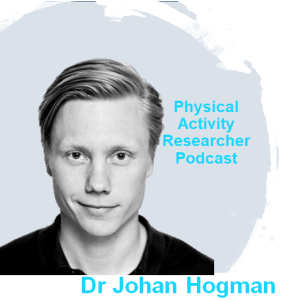
Promoting Playful Activities in Sports: "They have to be more playful elements and basically activities that have other logics than winning and competing and comparing."— Dr Johan Högman
---
Timestamps:
"Exploring Views on Getting Children Involved in Sports"
"Challenging initiatives fail to attract inactive children"
"Revamping Children's Sports: Beyond Winning and Competing"
"Alternative Physical Activities vs Traditional Sports Programs"
"Alternative physical activity for inactive children tested"
Johan Högman is interested in the social and cultural dimensions of how and why children move their bodies. He believes that physical activity is important for all children, regardless of the type of activity, and that understanding the societal views of physical activity is vital in ensuring that more children are able to participate.
Johan's research involves digging deeper into the conditions that impact physical activity in children and the factors behind why some children may not be as active as others.
Overall, he is passionate about promoting physical activity and helping more children to move their bodies in healthy ways.
----
"On this episode of Physical Activity Researcher Podcast, we discuss the challenges of engaging physically inactive children in sports activities. Our speaker explains that while some children love sports and physical activity, those who are not as active perceive it as sporty and competitive, making them less likely to participate.
To address this issue, our researcher recommends changing the ordinary business of sports clubs and offering more diverse activities that appeal to non-athletic children. The episode covers the use of the bioecological theory to understand the factors that prevent children from enjoying physical activity.
The theory helps to examine individual traits and abilities and how they interact with the cultural and environmental factors. The podcast also shares insights on the best practices for conducting focus groups to collect children's experience and perceptions regarding physical activity.
Finally, our speaker talks about the ongoing efforts to come up with alternative physical activities that are enjoyable and accessible to inactive children by conducting a 12-week program with playful activities like Pokemon Go and trampoline parks to measure the effectiveness compared to traditional sports activities."
----
This podcast episode is sponsored by Fibion Inc. | Better Sleep, Sedentary Behaviour and Physical Activity Research with Less Hassle
---
Collect, store and manage SB and PA data easily and remotely -
Discover ground-breaking Fibion SENS
---
SB and PA measurements, analysis, and feedback made easy.
Learn more about Fibion Research
---
Learn more about Fibion Sleep and Fibion Circadian Rhythm Solutions.
---
Fibion Kids - Activity tracking designed for children.
---
Collect self-report physical activity data easily and cost-effectively with Mimove.
---
Explore our Wearables, Experience sampling method (ESM), Sleep, Heart rate variability (HRV), Sedentary Behavior and Physical Activity article collections for insights on related articles.
---
Refer to our article "Physical Activity and Sedentary Behavior Measurements" for an exploration of active and sedentary lifestyle assessment methods.
---
Learn about actigraphy in our guide: Exploring Actigraphy in Scientific Research: A Comprehensive Guide.
---
Gain foundational ESM insights with "Introduction to Experience Sampling Method (ESM)" for a comprehensive overview.
---
Explore accelerometer use in health research with our article "Measuring Physical Activity and Sedentary Behavior with Accelerometers ".
---
For an introduction to the fundamental aspects of HRV, consider revisiting our Ultimate Guide to Heart Rate Variability.
---
Follow the podcast on Twitter https://twitter.com/PA_Researcher
Follow host Dr Olli Tikkanen on Twitter https://twitter.com/ollitikkanen
Follow Fibion on Twitter https://twitter.com/fibion
https://www.youtube.com/@PA_Researcher
More Episodes
Create your
podcast in
minutes
- Full-featured podcast site
- Unlimited storage and bandwidth
- Comprehensive podcast stats
- Distribute to Apple Podcasts, Spotify, and more
- Make money with your podcast
It is Free
- Privacy Policy
- Cookie Policy
- Terms of Use
- Consent Preferences
- Copyright © 2015-2024 Podbean.com







